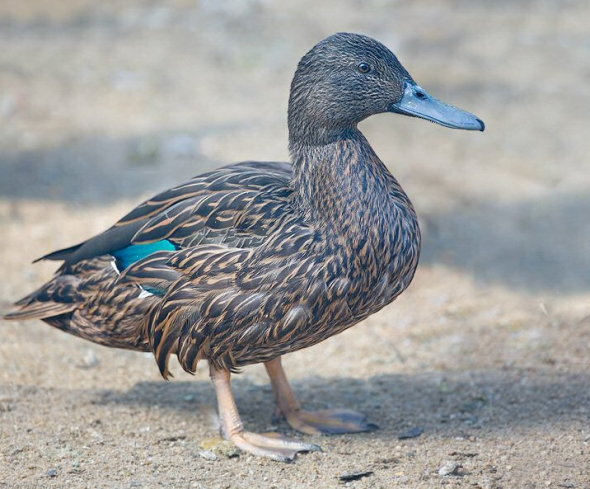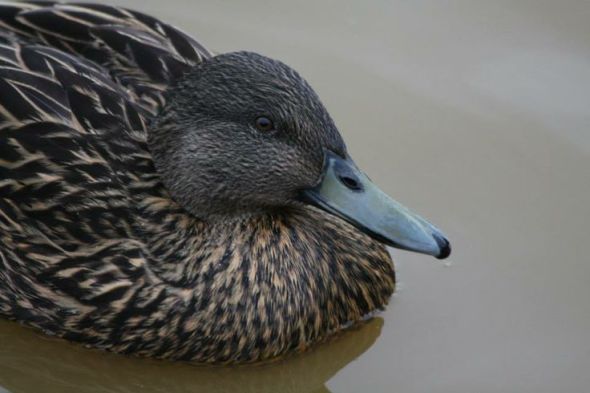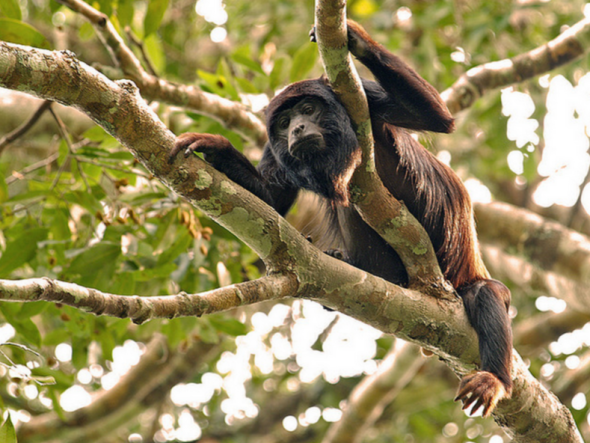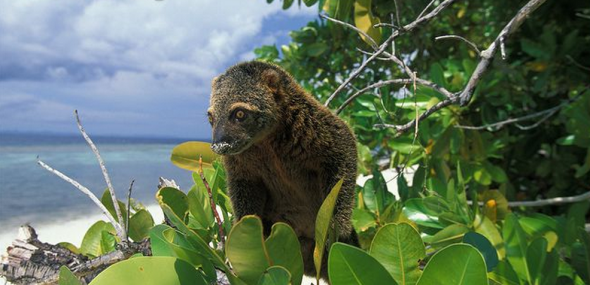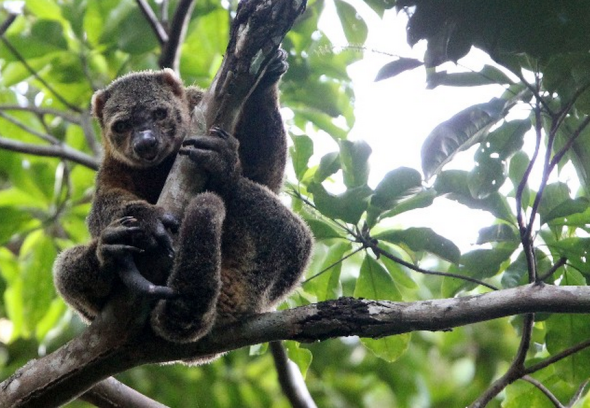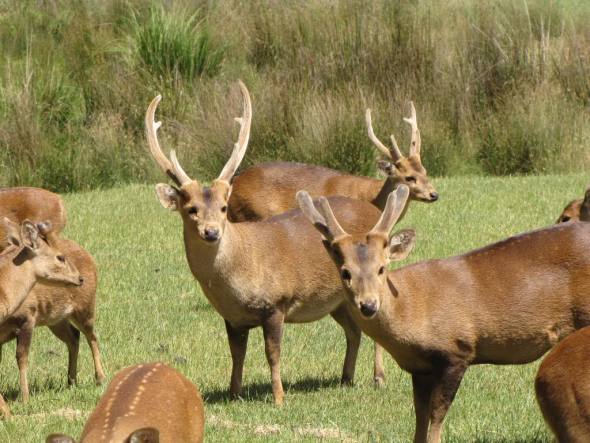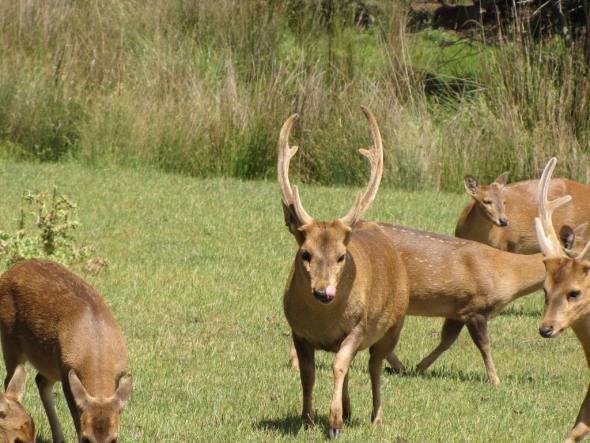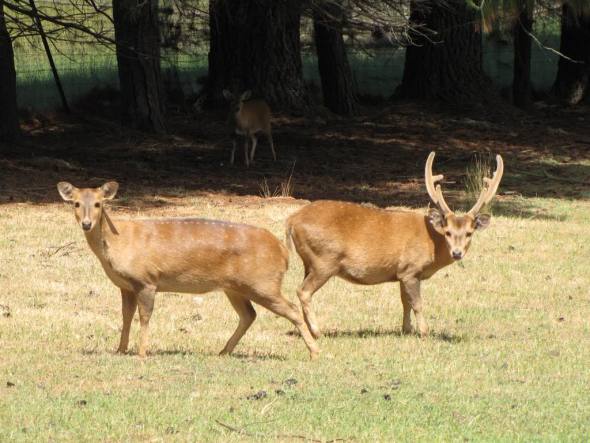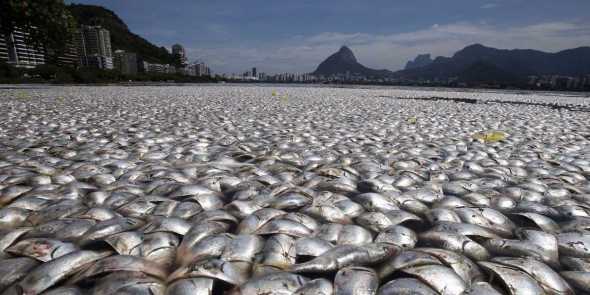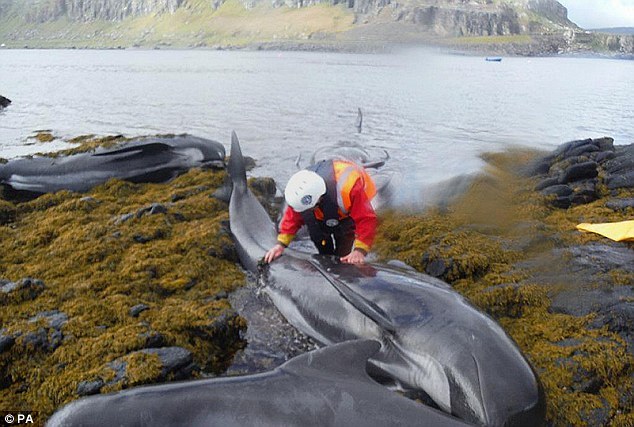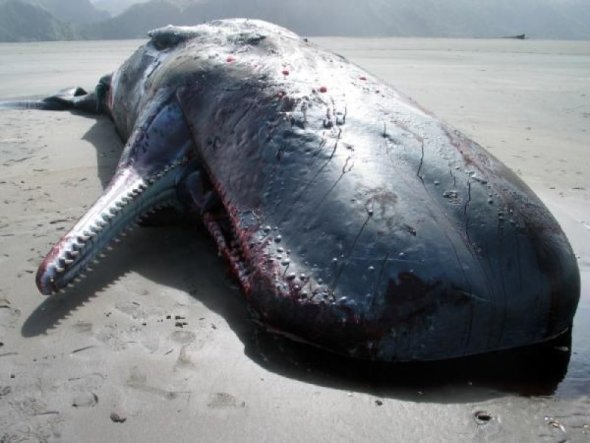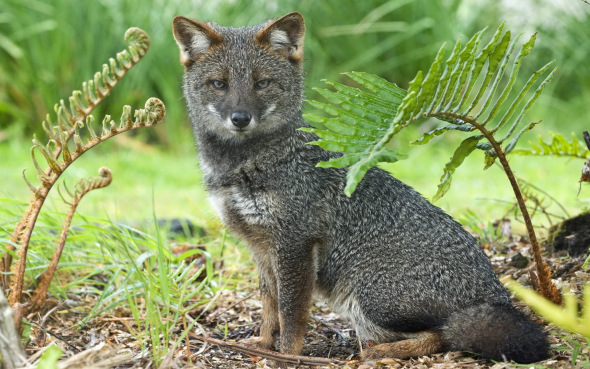Endangered Species Friday: Anas melleri.
Endangered Species Friday: Anas melleri
This Fridays Endangered Species watch Post (ESP) focuses on a very undocumented bird known scientifically as Anas melleri and commonly known as the Meller’s Duck.
The Meller’s Duck was identified back in 1865 by lawyer and Doctor Philip Lutley Sclater FRS FRGS FZS FLS (4 November 1829 – 27 June 1913) was an English lawyer and zoologist. In zoology, he was an expert ornithologist, and identified the main zoogeographic regions of the world. He was Secretary of the Zoological Society of London for 42 years, from 1860–1902.
Listed as endangered, populations are on the decline quite extensively throughout the birds entire range. A. melleri qualified for (endangered status) back in 2012. Endemic to Madagascar the species can be located on the eastern and northern high plateau. Populations are isolated on massifs on the western edges of the plateau. Documented reports from the west of the island most probably refer to vagrant or most likely wandering birds.
Its been alleged that at some time from 2012 re-introduced populations on the island of Mauritius are now extinct - however there remains no hard hitting evidence to back this claim up, conservationists have stated that a ‘probable extinction’ occurred on the island.
The Meller’s Duck was once described as common on the Africans island of Madagascar, unfortunately there is no evidence to back this claim up either. Conservationists that visit the island regularly from International Animal Rescue Foundation Africa and have documented on the Meller’s Duck previously have been informed by locals that the species is rarely seen, however huntsmen will peddle the meat of ducks into local villages.
International Animal Rescue Foundation Africa stated the species had been documented by explorers as ‘densely populated’ on the island from the 1500’s to 1800’s. Sadly since human colonization increased on the island after the French protectorate from the mid 1800’s human population growth on the island has attributed to current decline of the species. Over the last twenty years human population has skyrocketed significantly which unfortunately has led to vast swathes of habitat destroyed and illegal poaching to occur.
“All birds seem to be within a single subpopulation which is probably continuing to decline rapidly. Extinctions are likely to occur in under a few years, five years max”…
Conservation teams like the local communities have confirmed that the species is sadly no longer common ‘anywhere’ other than forested areas of the northwest and in the wetlands around Lake Alaotra where there are some breeding pairs, but where many non-breeders collect, with up to 500 birds present. All birds seem to be within a single subpopulation which is probably continuing to decline rapidly. Extinctions are likely to occur in under a few years, five years max!.
Population sizes are incredibly depressed. We now know the species numbers at 2,000 to 5,000 individuals which equates to exactly 1,300 to 3,300 mature individuals. Should pet collection, poaching, habitat destruction Etc continue at the rate it is extinctions will as explained occur in roughly (730 days). That’s how serious the problem is.
Conservation projects are underway of which the IARF have contributed funding towards the Durrell Wildlife Conservation Trust. The species occurs in at least seven protected areas, and is known from 14 Important Bird Areas (78% of eastern Malagasy wetland IBAs) (ZICOMA 1999). No regular breeding sites are known. In 2007, there was a drive to increase the number of institutions that keep the species in captivity, and as such the bird is a nationally protected species.
Conservation actions planned: Protect remaining areas of least-modified wetlands at Lake Alaotra. Conduct wide-scale status surveys of eastern wetlands. Study its ecology to identify all causes of its decline and promote development of captive breeding programmes.
(Please note all new monetary and equipment grants provided by IARFA from August of last year to present has yet to be updated into the main transparency register onsite)
Meller’s duck breeds apparently during most of the year except May–June on Madagascar, dependent on local conditions; the Mauritian population has been recorded to breed in October and November (however as explained is likely to now be extinct). Unlike most of their closer relatives—with the exception of the African black duck—they are fiercely territorial during the breeding season; furthermore, pairs remain mated until the young are.
Threats
A. melleri is still classed as the largest species of wildfowl found in Madagascar and is widely hunted and trapped for subsistence (and for sport). Interviews with hunters at Lake Alaotra suggest c.450 individuals are taken each year, constituting 18% of the global population.
Long term deforestation of the central plateau, conversion of marshes to rice-paddies and degradation of water quality in rivers and streams, as a result of deforestation and soil erosion, have probably contributed to its decline too. Widespread exotic carnivorous fishes, notably Micropterus salmoides (although this may now be extinct) and Channa spp., may threaten young and cause desertion of otherwise suitable habitat.
Its decline on Mauritius has been attributed to hunting, pollution and introduced rats and mongooses as well as possible displacement by introduced Common Mallard Anas platyrhynchos. Pairs are very territorial and susceptible to human disturbance.
Extinction is likely to occur of which continued protective captivity projects must increase for the birds future survival and re-introduction elsewhere.
The video below depicts a Meller’s Duck captivity project in Germany.
Thank you for reading.
Dr Jose C. Depre
http://www.speakupforthevoiceless.org
Please donate to SAYNOTODOGMEAT.NET < Click the link - [email protected]
Endangered Species Monday: Alouatta belzebul.
Endangered Species Monday: Alouatta belzebul
This Monday’s endangered species article from the (Endangered Species Watch Post) focuses on the Red Handed Howler Monkey of which is listing near to endangerment. (Image Red Handed Howler Monkey)
Generically identified as Alouatta belzebul back in 1766 by Professor Carl von Linnaeus (1707 – 10 January 1778), also known after his ennoblement as Carl von Linné was a Swedish botanist, physician, and zoologist, who laid the foundations for the modern biological naming scheme of binomial nomenclature.
Listed as vulnerable the species is endemic to Brazil (Alagoas, Maranhão, Pará, Paraíba, Pernambuco, Rio Grande do Norte, Sergipe and Tocantins). Populations are currently on the decline of which its very likely the species will be re-categorized as endangered within the next five years, if not sooner.
A. belzebul is said to be extremely common in some areas such as Marajó however is noted as rare within the Atlantic Forest portion of the range known as; Rio Grande do Norte, Alagoas, Paraíba and Pernambuco. Last survey census’s reported the species to be inhabiting at least ten isolated locations of which two hundred individuals remain in each plot.
International Animal Rescue Foundation Brazil have for the past three years been conducting surveys within the area will be submitted to the (IUCN). Furthermore the Environmental Protection Unit now re-based in Londrina are working with local communities, hunters and farmers within the A. belzebul range to preserve commonly known species of monkey, birds, amphibians and flora within the region.
IARFB are also currently conducting investigations to locate where sugar cane is being exported too and used within from the A. belzebul’s region. Its believed that America, Mexico, South America, and Europe are purchasing large sugarcane exports from the region. Tesco, J.S Sainsbury’s, Cooperative Food Group, Asda, Walmart, Woolworths and Spar have all been noted on suppliers exports from the regions. Aldi, Lidl, Quick-Save, Budgens have been ruled out. We are least impressed though with J.S Sainsbury’s name written on export documents of sugar cane from the region.
Within the ten isolated locations six populations are known to reside in Paraiba, two in Rio Grande de Norte, one in Pernambuco, and one in Alagoas. The largest population in the Atlantic Forest is in Pacatuba in Paraiba with about 80 animals. There have been five registered local extirpations from forest fragments in the last 50 years.
Little known conservation actions are under way within their endemic region and as explained populations are decreasing and nearing endangerment. A. belzebul is listed within the family of Atelidae which is one of the very first five of new recognized ‘new world monkeys’. Its quite likely that new sub-species of the Red Handed Howler Monkey may be located as well as newer species of ‘new world monkeys’ too within the coming years. Only five years ago did scientists locate over 100,000 new species within the Yasuni National Park, Ecuador so in reality anything is possible.
The Atelidae family host howler, spider, woolly and woolly spider monkeys (the latter being the largest of the New World monkeys). They are found throughout the forested regions of Central and South America, from Mexico to northern Argentina.
When the species is not foraging on the ground floor they can normally be found resting in the canopies of trees at a height of some sixty feet. Social groups normally consist of seven to twenty members that will host mature males, females juveniles and infants. Males normally take lead of the pack or (troop).
These large and slow-moving monkeys are the only folivores of the New World monkeys. Howlers eat mainly top canopy leaves, together with fruit, buds, flowers, and nuts. They need to be careful not to eat too many leaves of certain species in one sitting, as some contain toxins that can poison them. Howler monkeys are also known to occasionally raid birds’ nests and chicken coops and consume the eggs.
Image: Adult Red Handed Howler Monkey.
Howlers are the only New World primates which regularly include mature leaves in their diet, although softer, less fibrous, young leaves are preferred when they are available. Their folivory and ability to eat mature leaves is undoubtedly one of the keys to their wide distribution and the wide variety of vegetation types they inhabit.
Mature fruit is the other important food item, especially wild figs (Ficus) in many regions, but they also eat leaf petioles, buds, flowers (sometimes seasonally very important), seeds, moss, stems and twigs, and termitaria. The diet of two A. belzebul groups in the Caxiuanã National Forest was studied by Souza et al. (2002). They were largely folivorous but would switch to fruits whenever available, especially during the wet season.
Size:
Adult male weight 7.27 kg (n=27),
Adult female weight 5.52 kg (n=26)
Adult male weight 6.5-8.0 kg (mean 7.3 kg, n=27),
Adult female weight 4.85-6.2 kg (mean 5.5 kg, n=26) .
Threats
Listed on Cites Appendix II there are few threats associated with the species. Nevertheless they still remain and if left unchecked can rapidly increase placing the new world monkey in danger of extinction.
In the Amazon, the species is widespread, although they are hunted. The Amazon populations have suffered severely from forest loss throughout their range in southern Pará over the last decade. In the Atlantic Forest population, the major threat is the fragility of the remaining small forest patches to stochastic and demographic affects (habitat loss and fragmentation has been mainly due to sugar-cane plantations).
Please share and make aware the Red Handed Howler Monkey’s plight. Tip: Check sugar products from local shops and hypermarkets to ensure your not aiding the destruction of their natural habitat via your sugar purchase. Check your local candy and other shopping supplies. If necessary contact companies politely asking where they are obtaining the sugar products from. Never give up.
Thank you for reading.
Dr Jose C. Depre.
Environmental and Botanical Scientist.
Chief Executive Officer
Endangered Species Friday: Ailurops ursinus
Endangered Species Friday: Ailurops ursinus
A. ursinis was identified back in 1824 by Dutchman Dr Coenraad Jacob Temminck - (31 March 1778 – 30 January 1858) was a Dutch aristocrat, zoologist, and museum director. Listed as vulnerable the species is endemic to Indonesia on the island of Sulawesi of which there remains limited data on this rather fine specimen of marsupial that resides in the family phalangeridae. (Image: Young Bear cuscus)
Populations of the (Bear cuscus) as its commonly known continue to steadily decline even though there are limited - conservation measures in place protecting the species (There remains as yet no data on population size). The Bear cuscus has practically gone extinct within the Tangkoko-DuaSudara Nature Reserve of which a staggering 95% decline has been recorded within the region alone of which the primary threat within the nature reserve is hunting and trade for pets.
North Sulawesi has also seen a staggering decline identical to the population decreases documented within the Tangkoko-DuaSudara Nature Reserve too. Yet again hunting and the illegal pet trade are very much responsible, and may very well within the next five to ten years lead to a complete extinction occurring.
As much as I myself hate to say it I am pretty certain from viewing statistical data past and present that extinctions are going to occur even sooner than predicted. Should extinctions occur it proves yet again that poaching is having a disastrous effect onto just about every African and Asian species known.
Habitat loss and forest clearance are all playing a pivotal roll at decreasing populations of this beautifully attractive marsupial. As a conservation and botanical scientist sometimes I wonder to oneself why we even bother to help species of animals and flora when some governments show no support, or respect whatsoever in our quest to protect and serve. Then I remember, my children and their children’s heritage is just as important as mine and the teams fight to protect.
Bear cuscus are known as arboreal marsupials meaning, they mostly thrive and spend the majority of their peaceful and playful lives within trees and dense forest. Unfortunately these forests and trees are slowly dwindling in size primarily for land clearance to support local farms and communities and, not forgetting slash and burn activities. I cannot begin to imagine what these creatures think and feel when destructful and greedy humans destroy their homes and pastures. The feeling of not-knowing-when such harm is to be inflicted must be terrorizing for them.
The genus contains the following single species that is known to be related to the Bear cuscus; Ailurops melanotis that inhabits the Salibabu Island listed as (critically endangered) and endemic to Indonesia on the island of Sulawesi. Typically found in undisturbed tropical lowland moist forests, this species does not readily use disturbed habitats, thus it is not usually found in gardens or plantations. It is a largely diurnal and as explained a arboreal species that is often found in pairs. Diet usually consists of a variety of leaves, preferring young leaves, and like many other arboreal folivores it spends much of its day resting in order to digest similar to the Koala bear of Australia.
Image: Bear cuscus relaxing in the canopy of Tangkoko
The only known conservation actions that are taking place are within in few protected areas, that include: Tangkoko-DuaSudara Nature Reserve, Bogani Nani Wartabone National Park, Lore Lindu National Park, Morowali National Park, and a host of forest reserves. This species is nominally protected by Indonesian law. Unfortunately even though the species is protected the illegal pet trade still continues of which I myself have on many occasions located small pet shops in Indonesia selling Bear cuscus from rusty, cramped cages.
Threats
The species is threatened by habitat loss due to clearance of forest for small-scale agriculture and through large-scale logging. It is also heavily hunted by local people for food, and collected for the pet trade. Cuscus hunting forays are often planned before special occasions (e.g., birthday celebrations) in order to provide future guests with the greatly appreciated meat. (These inferences are based on some six months of residence among Alune villagers in 1993–95, which included participation in forest activities and standard ethnographic data collection.)
Thank you reading.
Dr Jose C. Depre
Environmental and Botanical Scientist.
Please donate by clicking the link below and help the board of directors establish their Viet Nam pet and wildlife rescue and rehabilitation clinic today. Without your help we cannot take dogs, cats and small bush meat animals of the streets and into safety. No donation is to small and all donations are greatly and kindly appreciated.
Please donate here:
https://www.facebook.com/SayNoToDogMeat/app_117708921611213
Stay up to date with our SNTDM newsletter:
https://www.facebook.com/SayNoToDogMeat/app_100265896690345
Thank you.
Stay up to date with African and international environmental and animal welfare affairs here:
https://www.facebook.com/pages/International-Animal-Rescue-Foundation-World-Action-South-Africa/199685603444685?fref=ts
Endangered Species Monday - Axis calamianensis
Endangered Species Monday - Axis calamianensis
This Mondays endangered species article we take a brief look into the secretive and rather elusive life of the Calamian Hog deer scientifically identified as - Axis calamianensis the species is also commonly known as the Calamanian Deer, Calamian Deer, Calamian Hog Deer or the Philippine Deer.
(Pictured above: Calamian Hog stag)
A. calamianensis was formally identified back in 1888 by Dr Pierre Marie Heude (1836–1902) was a French Jesuit missionary and zoologist. Born at Fougères in the Department of Ille-et-Vilaine, Heude became a Jesuit in 1856 and was ordained to the priesthood in 1867. He went to China in 1868. During the following years, he devoted all his time and energy to the studies of the natural history of Eastern Asia, traveling widely in China and other parts of Eastern Asia.
From 1986 - 1990 A. calamianensis was listed back then as vulnerable however, since this time much has changed regarding the species habitat, and way of living. From 1994 Dr Groombridge identified the need to re-list the species as (endangered) of which a further evaluation after a more in-depth census was concluded (1996) showed the species to be verging near extinction. The last “population census” undertaken in 1996 confirmed the species was still endangered, which led to evasive and aggressive conservation projects to be put into action to preserve the species.
Image: Calamian stag a little uneasy on his feet
Endemic to the Philippines the species is restricted to the Calamian Islands in the Palawan faunal region. The species occurs on three of the four larger islands of Calamians, i.e. Busuanga, Calauit and Culion. Sketchy reports have suggested the species also occurred on at least nine other related islands too however, little evidence backs these claims up.
Reports have confirmed that localized extinctions have occurred in some (78%) of these islands; (Bacbac, Capari, Panlaitan, Galoc, Apo, Alava and Dicabaito), and to survive on only two of these islands, namely Marily and Dimaquiat. A. calamianensis is not known to occur anywhere else from outside of its now fragmented ranges.
Commonly viewed within most of its native range back in the middle 1940’s population sizes have seriously diminished since the late 1990’s. While many drastic declines were seen throughout the 1990’s one area that didn’t see population declines was that of the extreme south of Culion, by the mid-1970s.
By the time the Calauit Island Game Preserve and Wildlife Sanctuary was created, in some way to preserve species populations, conservation actions were already to late of which populations had declined quite rapidly. Reports placed the population size from 1,900 “individuals” which equated to around 250 “mature individuals (if that).
Recent surveys from 2006 showed quite drastic declines of which hunting was yet again the main primary cause for the species nearing extinction (many hunters try to defend and debate this - yet the evidence is there in black and white for them all to view). Despite a negative outlook from the last “official” 2006 census populations were still said to be quite widespread in Calauit, Busuanga and Culion. The 2006 census conducted by environmentalists, Rico and Oliver also confirmed the species populations were quite dense on the islands of Marily and Dimaquiat.
The overall reports into present population sizes though is not good, and its with sad regret to report that populations are continuing to decline at a very rapid rate, despite the species coming under some protective plans there really is no real “protection or even law implemented into action” to protect this species for future generations to come. Listed on the Convention on International Trade of Endangered Species (Cites) Appendix I localized hunting for food continues to place the entire species in “great danger of nearing extinction” within the next five to seven years. However I must state that “should” extinctions occur in the wild, captive breeding programs are already in place in the hope to later reintroduce the species into a newer, and safer habitat.
Image: Doe and Stag
Current plans to preserve species are that of protective breeding programs for later reintroduction back into the wild. San Diego Zoological Gardens currently hosts some fifty four (54) inhabitants successfully bred within the zoo and managed well.
Threats
Currently research has proven the local people to hunt the species for food and use within dress and musical instrument production. Hunters within the species endemic island ranges are known to hunt the species for its antlers for use within the home as a decorative piece. Antlers are prized among the locals.
The species is threatened due to hunting pressure and human settlement and agricultural expansion over its very limited range, coupled by the evident lack of effective and sustained enforcement of the strong local protective legislation.
Hunting was particularly severe during the mid-1970s, but seemingly declined in most areas during the 1980’ and 1990’s, except on Calauit where hunting pressure increased dramatically following the resettlement of the island by former residents under the auspices of the ‘Balik (Back to) Calauit Movement’. In 1986, 51 out of the 256 families evicted from the island ten years earlier had re-settled on the island, and by 1992 the settlers numbered nearly 500 people.
Much of the hunting of the species is recreational, and also to provide venison to the local markets. On Calauit, introduced African ungulate populations are increasing but are probably not competing with Calamian deer. A presidential proclamation that precluded removal or control of exotic species, and the movement or management of Calamian deer on Calauit Island was recently amended, thereby also potentially enabling the better future control of the exotic ungulate populations, though in fact many of these populations have also been seriously reduced by poaching.
While relatively large parts of Busuanga and Culion Islands are still undeveloped and sparsely inhabited, there are no proper reserves on either.
The following conservation actions are in place or still under amendment:
1. Monitor current status on all the three islands and determine population trends. Evaluate levels of hunting and habitat loss.
2. Strengthen existing protected area system via establishment of new (additional) reserves and development and implementation of properly structured conservation management plan for Calauit that includes improved infrastructure, and measures to combat poaching.
3. Agree and establish a zoning system within Calauit in collaboration with all relevant stakeholders, which enforces strict protection of the core area.
4. Establish protected areas on Culion and Busuanga, based on habitat and deer status surveys.
5. Undertake behavioral and ecological research of Calauit deer to determine management requirements. Conduct
more detailed studies in selected areas.
6. Initiate a conservation education program using Calamian deer as a flagship species to promote a wide variety of related conservation activities, including combating the bush meat trade.
Unfortunately due to the species being so rare there remains very little video data on the animal. Below and included for your information depicts a captive breeding program, and not a public zoological garden. Captive breeding programs in most cases forbid the public from entry. Children can be heard in the background however we must note, protective breeding programs are out of public site. Images above include other species of red and velvet deer too. As explained due to such rarity of this animal obtaining any real positive data of the animal has proved at the best of times difficult. Please contact myself below for further information or questions.
Thank you for reading
Dr Jose C. Depre.
Revelation 16:16 Har-Ma ged’on or Human Fault?
Revelation 16:16 Har-Ma ged’on or Human Fault?
Since 2000 International Animal Rescue Foundation has been following, reporting and researching mass animal deaths around the globe and (some) freak unexplained deaths that have left scientists baffled. Furthermore the increasing avian bird flu pandemic that is threatening many birds and dogs looks set to be the largest outbreak in history.
Some of the worst cases we and the I.A.R.F have viewed are unexplained whale, seal and dolphin beaching’s all of which have been occurring along coastlines and within local fresh water rivers. Pollution has been the main number one factor blamed for many land and marine deaths. However other deaths have left ourselves and scientists puzzled as to why many animals have been found dead in large piles, what has led to such large numbers of animals dying off and how can such large die offs be prevented?
The vast majority of animal deaths seem to be occurring within Asia and the United States. Research has shown that there is no real limited location in either the United States or Asia. 8th June 2015 in Florida hundreds of dead fish washed up onto the local shoreline. A few days prior to this a large fish kill in a lake in Mattoon, Illinois was witnessed. Meanwhile in Lake Aldama, Mexico 3rd June 2015 tons of fish were located dead floating on the surface in what has been stated as “unexplained mass deaths”.
Image: 2 waterways that will host 2016 Olympic events in Brazil are filled with dead fish and trash 16 months before the games.
Within the past twenty eight days hundreds of dead fish appeared in the waters of Michoacan, Mexico. Hundreds of dead fish were found washed up along Big Bear Lake in California, America. Meanwhile thousands of dead fish were found washed ashore on a river in Rhode Island. 30th May 2015 tens of thousands of dead fish were found washed up along Flanders bay, New York.
Environmental teams from International Animal Rescue Foundation Scotland, England and France have also reported and viewed with dismay mass die offs and stranding’s off the British, Scottish and French coastlines too. 2nd June 2015 - 21 pilot whales were located stranded, ten of which were reported dead in Skye, Scotland. Within Rennes, France a large die off, of fish was witnessed in the River close to Rennes. 27th may 2015 hundreds of fish were located in the River Darlinton, Great Britain. On the 23rd April “thousands” of dead star fish were located off the coast in Cumbria, Great Britain and, on the 17th April 2015 “scores” of dead “dolphins and whales” were found washed up on the along the coast of France in what scientists state as “strange” and “unexplained”.
Image: Ireland, Lissadell Beach, Co Sligo, strewn with dead starfish.
There are many explanations as to why so many marine and fresh water animals have been found dead most of which are put down to chronic pollution, whales and dolphins colliding with marine vessels, changes in ocean temperatures, earthquakes down to environmental changes and, sonar operations by naval forces. Some marine experts and Animal Activists have blamed military operations within the seas and close to land. Conspiracy theorists are blaming secretive governmental organisations and operations while religious individuals are stating the time is coming 16:16 Har-Ma ged’on. Environmental scientists have found neither evidence of mass animal deaths caused by covert government operations or Har-Ma ged’on nearing.
Conspiracy theorists and religious individuals need to put their suspicions and beliefs to one-side and concentrate on the more realistic issue which is that of human blame. Meanwhile, while there is evidence to prove that human activity and negligence is to blame it must be noted too the “unexplained events” that still cannot be answered are a cause for concern and need more in-depth investigations.
Image: Pilot whales stranded off the coast of Scotland, Skye. Nine died.
Below I have included three major culprits that International Animal Rescue Foundation’s Marine Department have been investigating since 2000. While these three culprits remain major players one must not forget aggressors such as climate change of which reveals little evidence on mass marine deaths and deliberate or accidental damage such as oil spillage or vessel waste dumping out at sea. Below and for your information is collated research in word format and video evidence too. If you’d like to discuss this matter further please do not hesitate in contacting myself or anyone of my team here at: [email protected]
Red Tide: Algae Bloom/ Red Tide.
Image: Red tide (HAB) Harmful Agal Bloom of the coast, Sydney Australia.
An algal bloom is a rapid increase or accumulation in the population of algae (typically microscopic) in a water system. Cyanobacteria blooms are often called blue-green algae. Algal blooms may occur in freshwater as well as marine environments. International Animal Rescue Foundation’s Marine Department has located much evidence of such algal blooms responsible for mass fish and whale deaths.
Of particular note are harmful algal blooms (HABs), which are algal bloom events involving toxic or otherwise harmful phytoplankton such as dinoflagellates of the genus Alexandrium and Karenia, or diatoms of the genus Pseudo-nitzschia. Such blooms often take on a red or brown hue and are known colloquially as red tides.
During the 13th May 2015 reports of many hundreds of Diamondback Terrapins were reported within Flanders Bay. Marine scientists have stated that saxitoxin is to blame for the mass animal deaths however the jury is still out on this issue. I must also note that Flanders Bay has in the past six months been the main focus of attention for marine biologists as hundreds and hundreds of dead marine life has been found washing up within the area with no real explanation.
Saxitoxin (STX) is the best-known paralytic shellfish toxin (PST). Ingestion of saxitoxin (usually through shellfish contaminated by toxic algal blooms) is responsible for the human illness known as paralytic shellfish poisoning (PSP).
The term saxitoxin originates from the species name of the butter clam (Saxidomus giganteus) in which it was first recognized. But, the term saxitoxin can also refer to the entire suite of related neurotoxins (known collectively as “saxitoxins”) produced by these microorganisms, which include pure saxitoxin (STX), neosaxitoxin (NSTX), gonyautoxins (GTX) and decarbamoylsaxitoxin (dcSTX).
Saxitoxin has a large environmental and economic impact, as its detection in shellfish such as mussels, clams and scallops frequently leads to closures of commercial and recreational shellfish harvesting, especially in California, Oregon, Washington, and New England. On researching current marine deaths in the California state of America I must note that Saxitoxin and human induced environmental change has been noted as causing the deaths of many seals and fish. The local seal deaths must not be confused with pollution or Saxitoxin but more increasing water temperature that is forcing fish further away from the shoreline. Due to mother seals having to fish further afield their cubs are being left for longer periods thus starving practically to death.
International Animal Rescue Foundation found quite alarming evidence of Saxitoxin an incredibly potent and toxic chemical known to be used within the armed forces as a “suicide pill” freely on sale via a quick and easy Google search. The Ead department furthermore located members of the public asking where they could obtain such a harmful chemical of which should only be handled by (experienced chemical professionals).
Back in August 2003 Saxitoxin was to blame for the deaths of many humback whales. The deadly alga was the leading suspect in the mass death of humpback whales around 150 miles off Cape Cod, say marine experts.
Carcass sightings suggest that at least 12 whales, mostly humpbacks, have died in the Georges Bank area, making it one of the worst known mass fatalities. “It’s really quite disturbing,” says whale biologist Phillip Clapham of the Northeast Fisheries Science Center in Woods Hole, Massachusetts.
A red tide of the toxic algae Alexandrium fundyense is the most likely culprit. The algae’s poison, saxitoxin, killed 14 whales in the same area in 1987. Saxitoxin can accumulate in mackerel which whales eat. Scientists did also point to a very slim chance of acoustic operations conducted at sea by the Navy.
International Animal Rescue Foundation has found Saxitoxin to be the main culprit thus far related to fish, whale, seal and other marine deaths. Saxitoxin has been blamed for the recent unexplained deaths of thousands of lobsters within California this past month too.
Could it also be a sheer coincidence that all deaths seen within Asia, United States and South America are somehow related to “Saxitoxin” and not religious events, the rebirth of Jesus Christ or covert military operations?
STX is a neurotoxin naturally produced by certain species of marine dinoflagellates (Alexandrium sp., Gymnodinium sp., Pyrodinium sp.) and cyanobacteria (Anabaena sp., some Aphanizomenon spp., Cylindrospermopsis sp., Lyngbya sp., Planktothrix sp.)
STX has been found in at least 12 marine puffer fish species in Asia and one freshwater fish tilapia in Brazil. However, the ultimate source of STX is often still uncertain. In the United States, paralytic shellfish poisoning is limited to New England and the West Coast. The dinoflagellate Pyrodinium bahamense is the source of STX found in Florida.
Recent research shows the detection of STX in the skin, muscle, viscera, and gonads of “Indian River Lagoon” southern puffer fish, with the highest concentration (22,104 μg STX eq/100 g tissue) measured in the ovaries. Even after a year of captivity, the skin mucus remained highly toxic. The various concentrations in puffer fish from the United States are similar to those found in the Philippines, Thailand, Japan, and South American countries. Coincidentally all of these countries have the “largest” amount of fish and whale die offs. However I must note that my mere speculation must not be taken for an answer.
Pollution: Human Negligence.
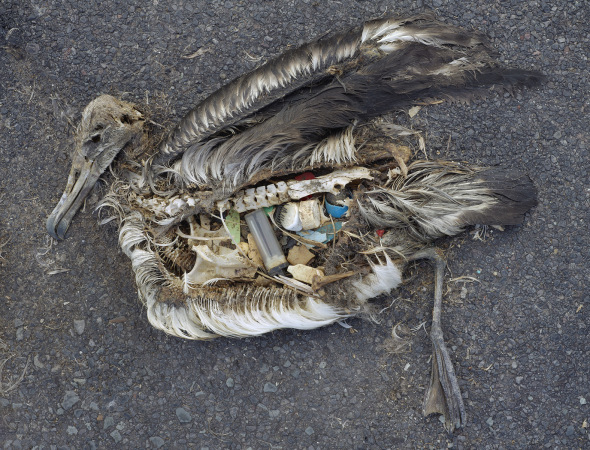
Image: Shocking - stomach contents of a dead Albatross.
I’m a great lover of birds and viewing this image has distressed myself countless times. Daily I ask why do we as humans treat our planet like a dumping ground of which animals suffer dearly.
While Mother Nature is naturally attacking herself we must not forget that human negligence is overall the biggest culprit known to be causing countless marine and fresh water animal deaths. Pollution increases as human population does and a colossal lump of everyday natural and man-made human waste sadly does end up within fresh and marine waters.
10th January 2015 the Environment Agency in Leicestershire, United Kingdom blamed human pollution for causing the deaths of “thousands of fresh water fish”. Farm slurry was the main culprit here of which the Environmental Agency concluded within their report as the main culprit.
Waterway manager for the trust, Neil Owen, said: “It’s really sad that we’ve had so many fish die from the careless actions of an individual which allowed slurry to enter our waterway. The end count was said to be “60,000” fish dead due to one ignorant and unprofessional action of a single farmer.
Meanwhile this past April tons of dead fish have been removed from a Rio de Janeiro lagoon where Olympic events are to be held in 2016, sparking debate among officials and scientists over what caused the mass die-off, as well as fears that the water may be unsafe for athletes.
The die-offs are becoming a common occurrence in Rio, where rivers, lakes and even the ocean are blighted by raw sewage and garbage. Officials have argued over the cause, with Rio’s environmental secretariat insisting last week that the incident is the result of the sudden change in water temperature.
“The intense rains that happened last week and a rise in the sea levels led to a spike in the [sea] water entering the lake, causing a thermal shock,” the secretariat said in a statement, adding that the water temperature had fallen by 7.2 degrees Fahrenheit in a short period of time. Many scientists disagreed with that explanation, pointing to pollution instead.
January 12th 1988 pollution was blamed for the deaths of countless scores of beluga whales. Autopsies of dead belugas washed onto the banks of the river have found very high levels of more than 30 hazardous chemical pollutants, including DDT, polychlorinated biphenyls or PCB’s, the pesticide Mirex, metals such as mercury and cadmium, and polycyclic aromatic hydrocarbons similar to those found in cigarettes and regarded as cancer-causing agents.
The diseases found in the 72 dead whales examined so far include bronchial pneumonia, hepatitis, perforated gastric ulcers, pulmonary abscesses and even a case of bladder cancer. A majority of the whales appear to have died from septicemia, or blood poisoning, which killed them because their immune systems failed.
While the above report dates back to the last century one would be led to believe that governing bodies would have at least (cleaned their act up). Unfortunately that is not the case. In August of 2014, biologists from the Virginia Aquarium and Marine Science Center Standing Response Team were notified of a particularly unusual sighting regarding a long young female sei whale. She was spotted swimming up the river, which is particularly unusual as these creatures are typically found in the deep waters of the Atlantic.
A necropsy revealed that the whale had swallowed a shard of rigid, black plastic that had lacerated its stomach and prevented it from eating. They found that she had also been struck by a ship. The shard of black plastic was later found to be a discarded DVD case.
To date International Animal Rescue Foundation has uncovered much evidence of marine pollution responsible for the deaths of small and larger fish down to entire shoals of fish and pods of dolphins. Plastic, carrier bags, oil and chemical pollution all reign in at number one and not the Coming of the new Jesus Christ or even a (not so) secret government operation aimed at killing humans and our precious wildlife. Think about it for a brief minute. Why would the United States (E.g) wish to kill hundreds of thousands of fish off when fish is a staple diet and major import and export monetary gain?
Naval Marine Operations: Acoustics.
Image: Whale death caused by naval sonar operations.
Despite natural events and pollution being the major two factors here there still remains yet another problem within our oceans that is angering Animal Activists, Marine Biologists and other experts. Acoustic activities, drilling and military marine operations reign in at number three.
Despite many reports and scholarship articles by leading scientists and marine agencies sounding the alarm acoustic disturbance has been noted and reported to be killing, injuring or seriously impacting on the physical health of whales, fish and crustaceans for some years. Sonars used by international military navy vessels from around the world are giving scientists somewhat of a headache - and - stopping such operations within the deep seas is also another problem especially when sonars are required in all but most of the naval vessels.
Back in 1963 of the Gulf of Genoa, Italy Naval Sonar (NS) operations led to the stranding of 15 Cuvier’s beaked whales (cause - naval maneuvers). Back in 1998 in the Canary islands +12 Cuvier’s beaked whales stranded with a further Gervais’ beaked whale stranding too (cause - FLOTA 88 naval exercise). Back in 2003 the following - Cuvier’s beaked whale (9), Blainville’s beaked whale (3), beaked whale spp (2), Minke whale (2), Atlantic spotted dolphin (1) all stranded, (cause - Naval MFA operation).
One of the very worst cases researched on was seen in Marion Bay, Tasmania where some 145 Long finned Pilot Whales stranded themselves, (cause - “suspected” use of sonar by two naval mine sweepers). Back in 2008 some 26 dolphins stranded themselves off the coast of Cornwall, Great Britain, (cause - Naval exercise but no ship sonar in use except HF hydrographic sonar on HMS Enterprise).
Three of the most commonly seen culprits have been included within this article for your information. Unfortunately while we are aware of these culprits more and more whales, fish and smaller sea creatures are washing up dead around the planet. While some cases cannot be answered due to unknown and non-investigated causes the vast majority of mass animal deaths eventually do indicate - humans as the major player while, natural events such as blooms come second and pollution ranking in at first (Still no evidence of a re-birth of Jesus Christ or the world ending though). Our seas like our lands and airways are becoming more and more congested and with each increase of human activity seen, more and more deaths of both land and marine animals will come.
International Animal Rescue Foundation has located no hard hitting evidence that proves the world is nearing an end, a re-birth of Jesus, Armageddon style apocalypse or (not so) secret military operations responsible for the deaths of many marine, fresh water and land animals.. However while the organisation can rule out a new Jesus re-birth and events written into religious scripture there does remain some suspicion surrounding the High Frequency Active Auroral Research Program or, commonly known as - (HAARP). However any such investigative studies on the (HAARP) program have been quashed as the program will be shutting down after informing Congress last year (2014) that funds needed to be used elsewhere on other weather modification programs. In reality the program is just entering a new phase
Concluding:
We are Mother Natures worst enemy and not any entity within a religious or conspiracy theorists scripture. Humans are polluting the atmosphere, littering the oceans and land, destroying natural habitat, over-populating, displacing animals, killing marine animals through the use of naval exercises and on, and on, and on.
Some people need to look beyond the computer, the conspiracy field of nonsense, religious dates and begin laying the blame at their own two feet. Failing this many more marine creatures and animals will subsequently perish.
Thank you for reading.
Dr Jose C. Depre.
Endangered Species Monday: Pseudalopex fulvipes.
Endangered Species Monday - Pseudalopex fulvipes
In this Monday’s endangered species article we focus our attention on the species of fox commonly known as the Darwin fox. Identified by Dr William Charles Linnaeus Martin (1798 - 1864). Dr Martin was an English naturalist.William Charles Linnaeus Martin was the son of William Martin who had published early color books on the fossils of Derbyshire, and who named his son Linnaeus in honor of his interest in the classification of living things.
Listed as CRITICALLY ENDANGERED the species was scientifically identified as Pseudalopex fulvipes endemic to Chile, Los Lagos. Charles Darwin collected the very first evidence of this rather stunning species back in 1834 however was not the primary identifier despite the species name. Since 1989 the fox has been re-monitored to determine its current population sizes and future classification. I am somewhat skeptical that this species will survive into the next five years even with more in-depth wild analysis - the species in my own expert opinion is doomed.
One fox was observed and captured back in 1999 for data and breeding with a further two adults captured back in 2002 in Tepuhueico. That same year it was noted a local as killing a mother and her cubs which amassed to some four Darwin foxes witnessed dead and alive within the wild since revaluation of species began from 1989. Some evidence although (little documented) has confirmed “sightings” of Darwin foxes during the year of 2002 however, these are sketchy reports.
On mainland Chile, Jaime Jiménez has observed a small population since 1975 in Nahuelbuta National Park; this population was first reported to science in the early 1990s. It appears that Darwin’s Foxes are restricted to the park and the native forest surrounding the park. This park, only 68.3 km² in size, is a small habitat island of highland forest surrounded by degraded farmlands and plantations of exotic trees. This population is located about 600 km north of the island population and, to date, no other populations have been found in the remaining forest in between.
Darwin’s Fox was reported to be scarce and restricted to the southern end of Chiloé Island. The comparison of such older accounts (reporting the scarcity of Darwin’s fox), with recent repeated observations, conveys the impression that the Darwin’s Fox has increased in abundance, although this might simply be a sampling bias.
As explained even with a very, very small increase in sightings - populations are declining and sadly we may be reporting in the next year or two an (extinction in the wild) occurring if not a complete extinction overall. Should that happen we’ve lost the entire species for good.
Darwin foxes are said and known to be forest dwelling mammals which could be why environmental surveys are proving to be fruitless. Darwin foxes occur only in southern temperate rainforests. Recent research on Chiloé, based on trapping and telemetry data on a disturbance gradient, indicates that, in decreasing order, foxes use old-growth forest followed by secondary forest followed by pastures and openings. Although variable among individuals, about 70% of their home ranges comprised old-growth forest.
Protected under Chilean law since 1929 the Darwin fox are listed on Cites Appendix II (Convention on International Trade of Endangered Species wild flora and fauna). Conservation actions that are under way in the Nahuelbuta National Park are to increase species populations and establish overall protection within this range. Temuco zoo did hold one single species of which was believed to be held for protective captive breeding however the fox has since died back in 2000.
Threats
Although the species is protected in Nahuelbuta National Park, substantial mortality sources exist when foxes move to lower, unprotected private areas in search of milder conditions during the winter. Some foxes even breed in these areas. This is one of the reasons why it is recommended that this park be expanded to secure buffer areas for the foxes that use these unprotected ranges.
The presence of dogs in the park may be the greatest conservation threat in the form of potential vectors of disease or direct attack. There is a common practice to have unleashed dogs both on Chiloé and in Nahuelbuta; these have been caught within foxes’ ranges in the forest. Although dogs are prohibited in the national park, visitors are often allowed in with their dogs that are then let loose in the park.
There has been one documented account of a visitor’s dog attacking a female fox while she was nursing her two pups. In addition, local dogs from the surrounding farms are often brought in by their owners in search of their cattle or while gathering Araucaria seeds in the autumn. Park rangers even maintain dogs within the park, and the park administrator’s dog killed a guiña in the park. Being relatively naive towards people and their dogs is seen as non-adaptive behaviour in this species’ interactions with humans.
The island population appears to be relatively safe by being protected in Chiloé National Park. This 430 km² protected area encompasses most of the still untouched rainforest of the island. Although the park appears to have a sizable fox population, foxes also live in the surrounding areas, where substantial forest cover remains. These latter areas are vulnerable and continuously subjected to logging, forest fragmentation, and poaching by locals. In addition, being naive towards people places the foxes at risk when in contact with humans. If current relaxed attitudes continue in Nahuelbuta National Park, Chiloé National Park may be the only long-term safe area for the Darwin’s Fox.
No commercial use. However, captive animals have been kept illegally as pets on Chiloé Island.
Current estimates place the species population count at a mere 250 left within the wild.
Thank you for reading.
Please share and lets get this fox the protection it requires through education, awareness and funding.
Links for interest:
Adopt a Darwin Fox.
General Information.
Dr Jose C. Depre.
International Animal Rescue Foundation Africa.
International Animal Rescue Foundation Africa.
Donate to Say No To Dog Meat today.
Say No To Dog Meat - Demonstration, Rescue and Rehabilitation.
An organisation called Say No To Dog Meat.Net are holding an event on the 4th April 2015 at 10:00 am internationally. The event that’s been in the planning since last year is to be held in many countries from London, Australia, Canada, America, Serbia, Indonesia, South Africa and more. For more information on Say No To Dog Meat’s global demonstration please click this >here< that will direct you to their Facebook page event forum.
Say No To Dog Meat was formed by three Chief Executive Officers that work within the environmental and animal rescue sector. The organisation has to date attracted hundreds of thousands of people worldwide, readers and supporters to their cause. Say No To Dog Meat is within the transition process of becoming an Australian registered charity, furthermore have recently purchased a run down derelict building within Viet Nam of which will be their main Asian pet medical rescue and rehabilitation clinic. Once dogs and cats are safe from the clutches of pet eaters, traders and snatchers they will be re-homed internationally to loving and caring adopters.
The rescue and rehabilitation clinic is incredibly important to the three Chief Executive Officers their volunteers and staff. Say No To Dog Meat’s rescue and rehab clinic will be one of few such rescues within Viet Nam that actively help to remove strays of the streets within Viet Nam that have no home thus removing dogs and cats from the snatchers clutches whom feed into the cruel and diseased pet meat trade.
B.A.R.C. IS ALSO MARCHING WITH Say No To Dog Meat in their Global March for dogs and cats in the meat trade; 10am Saturday April 4th, 2015. Will you be marching with them too, in your country? For more information email Say No To Dog Meat here at - [email protected] for a march location in your country.
While the Organisation is being heavily supported by its sister Environmental Organisation - International Animal Rescue Foundation Africa via media, press and private funding, funds are limited. Say No To Dog Meat need public support both financially and via its supporters through sharing articles, news and helping with organizing events and educational classes worldwide to help reduce the pet trade through honest youth and adult education. Not forgetting educating the public about meat food viruses and viruses as a whole that are passed on or mutate from live or dead animals and meat kept in unsanitary conditions. Some amazing media articles have already been released about Say No To Dog Meat such as here on Dogster and even while underfunded Say No To Dog Meat have already helped shut down a small dog meat market and rescued dogs from the meat trade - Read more here
A unique organisation:
Say No To Dog Meat are unique as their main ambition is not only to end the pet meat trade within Asia and Africa but also the cruel and barbaric bushmeat trade that poses a serious disease and health risk threat to humans and animals. The term bushmeat, also called wildmeat and game meat, refers to meat from non-domesticated mammals, reptiles, amphibians and birds hunted for food in tropical forests. Commercial harvesting and the trade of wildlife is considered a threat to biodiversity and human security. Should the bushmeat trade trade continue to be ignored we’ll see catastrophic declines of wildlife in areas of Africa and Asia of which extinctions are already occurring both locally and regionally of some exotic species.
Say No To Dog Meat also appeals to all tourists visiting Viet Nam to please refrain from making their jobs harder to ban the trade. Its commercials such as this seen below that only feed the trade.

Mission Statement:
Say No To Dog Meat’s founders have decades of experience fighting this inhumane industry and have worked hard to achieve unprecedented access into areas of the trade not readily accessible to most outsiders. The organisations investigative work allows them to gather current, accurate and up-to-date information and images, evidence that is paramount in spreading global awareness and pressuring governmental organizations to enact enforceable animal welfare laws that protect companion animals. Ultimately, the organisations intention is to help create meaningful social and governmental change that results in a more humane world for dogs and cats and wildlife endangered by the bushmeat industry.
The organisation is determined to expose the cruel and ruthless activities within the dog and cat meat trade that are perpetrated by dog farmers, cat farmers, animal traffickers, butchers, vendors and dog and cat eating customers. “This is a billion dollar industry” Co-Founder Donna Armes stated, centered on live companion animals being tortured, killed and served as menu items. “It is a gruesome, violent trade that must be halted” stated Michelle Brown Director of Say No To Dog Meat and Co-Director for International Animal Rescue Foundation Africa.
Video below shows Viet Nam dog snatchers this October caught on CCTV - these dogs are most likely now dead - fed into a cruel and horrific pet meat industry, Say No To Dog Meat aims to stop this with new laws they are lobbying the Viet Nam government with on two separate petitions.
By tackling poverty in the nations of Africa where dog meat is being consumed, Say No To Dog Meat will work with aid organisations and companies, as well as welfare groups and communities. Founder Dr Jose Depre states “we are positive that by improving dietary needs and wiping out poverty in these small areas of Africa, we can wipe out the dog meat trade and black market, thus decreasing infectious diseases, rabies, H1N1, mutations and food poisoning”.
Further to this awareness and education, within the arable agricultural section, Say No To Dog Meat hope to improve the lives of families and increase employment, thus decreasing crime, however the CEO stated “this is going to be the toughest area both within the pet meat industry and black market trade we’ve ever tackled, these actions will bring a better welfare for all though and we’ll not stop marching forwards for animal welfare nor will anyone get within our way in conquering our goals set, we have a job to do and we’re going to do it”
INDONESIA IS MARCHING WITH Say No To Dog Meat in their Global March for dogs and cats in the meat trade; 10am Saturday April 4th, 2015. Will you be marching with them too? For more info email Say No To Dog Meat.Net @ [email protected] for a march location in your country. INDONESIAN SUPPORTERS: please join Animal Defenders Indonesia in the JAKARTA march.
Founders of Say No To Dog Meat aggressively opposes legislation that promotes or legalizes companion animal slaughter. They do not believe in the myth of “humane meat,” reject the concept of “humane slaughter” and strongly believe that dog and cat butchers cannot be relied upon to implement “humane” practices. The organisation founders also oppose dog farmers, cat farmers, slaughter unions, individual farmers or any persons being permitted to “farm” small numbers of dogs and/or cats for personal consumption. In addition, they are against dog and cat elixirs and tonics, despite (unproven) claims of their health benefits.
Through educational efforts, Say No To Dog Meat hopes to enlighten the global public about the miserable lives farmed companion animals face and how this trade impacts dogs and cats throughout the world. Education will also be provided for those wishing to adopt rescued animals from the live meat trade. These animals have been through varying degrees of trauma, so guidance is needed in ensuring adoptive families understand the process of restoring their new pet’s health, happiness and well-being. In addition, Say No To Dog Meat will provide education for people in dog and cat eating countries who wish to learn about responsible pet ownership and providing safe, long-term environments for dogs and cats as loved family members.
Please Donate:
Say No To Dog Meat has commenced fundraising, from which their efforts will include rehoming rescued dogs and cats from the live meat trade once the Viet Nam rescue and medical clinic has been established. “All fundraising will be conducted with full transparency and information pertaining to our monetary activities will be made readily available” stated Michelle Brown wildlife rescue specialist that resides in Australia. Donna Armes that resides now in Canada stated “participating in Say No To Dog Meat campaigns and signing our petitions supports our work furthermore to bring change for a better world for dogs and cats victimized by this trade”. “We invite you to join our fight to halt the live dog and cat meat trade and Say No To Dog Meat” stated the team of elite environmentalists and animal rescuers.
Say No To Dog Meat’s donation link is below. The link will direct you to their Facebook page from which you can also subscribe to their site for news and events plus lots more.

Please Make a donation TODAY and help Say No To Dog Meat - Thank you
The organisation now requires public funding to help establish their rescue and medical facility for dogs and cats in Viet Nam and hopefully over the borders too. Say No To Dog Meat requires funding for renovation, water, gas and electrical services to be reinstated, pet triage and surgical clinic, rehabilitation and special needs area, isolation clinic, cages and pet boxes, surgical equipment, bedding and blankets, medical supplies, food, and much more.
Once the rescue and rehabilitation clinic is fully operation specialist staff employed will then commence rescuing strays from the streets of Viet Nam of both sick dogs and cats and pets in need of a loving forever home. There’s more too. The organisation will also be holding rabies and vaccination clinics to help reduce disease and decrease rabies within the country and over the borders. Lastly while Say No To Dog Meat recognizes the honest work undertaken by groups of Asian activists that actively seek out pet meat traffickers - no animals that Say No To Dog Meat’s staff rescue will come from traffickers or butchers that require payment. “What’s the point in paying pet meat traffickers and marketeers just for them to purchase more dogs and cats from public funding” stated Jose Depre, “that is defeating the main objective and continues to feed the pet meat trade, were here to help and rescue pets not to continue a trade a circle of abuse”.
SAY NO TO DOG MEAT.NET is calling on the public to help them with their global march planned since January 2014. Demonstration event organizers and demonstrators are required eagerly to beef up numbers to make change happen. For more information you can contact Say No To Dog Meat hereto at [email protected]
Liam Williams - Publisher Environmental News and Media

